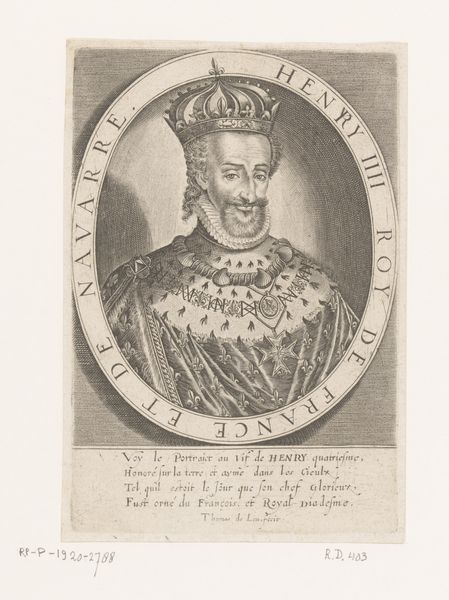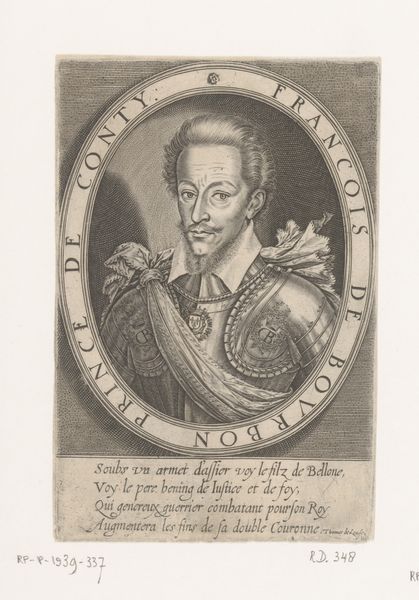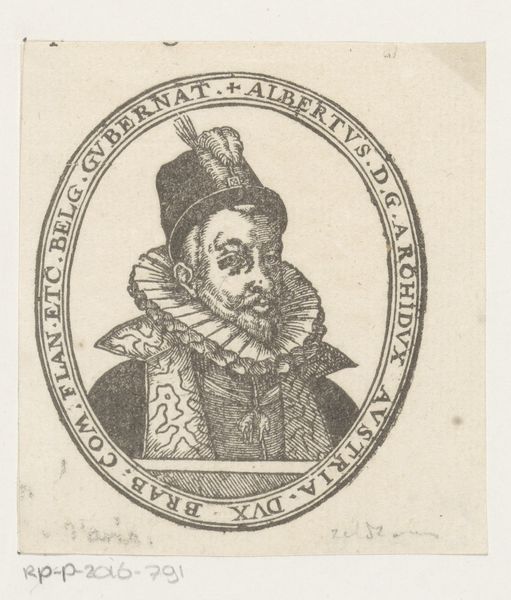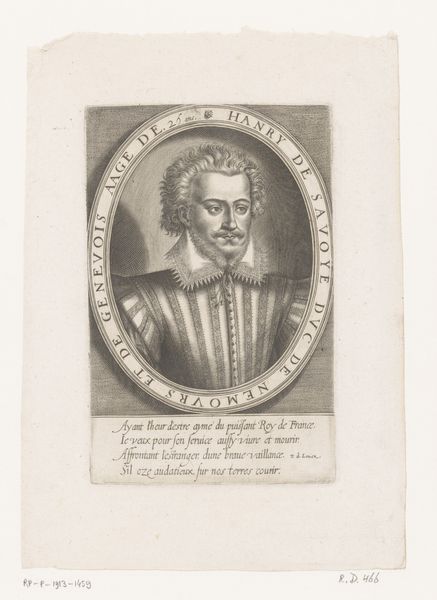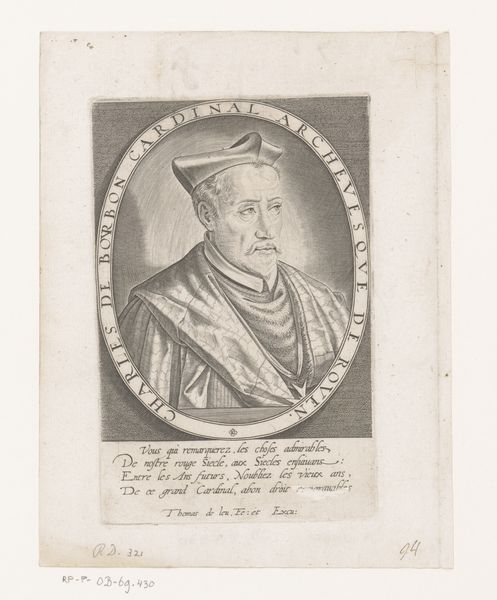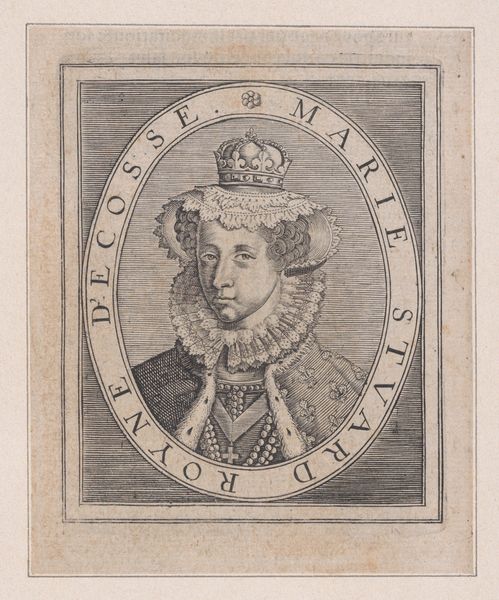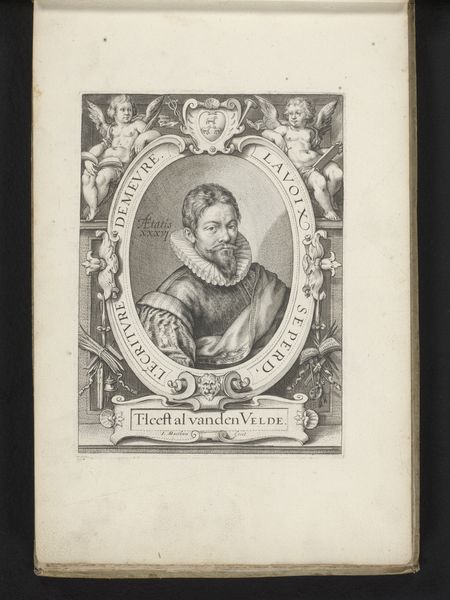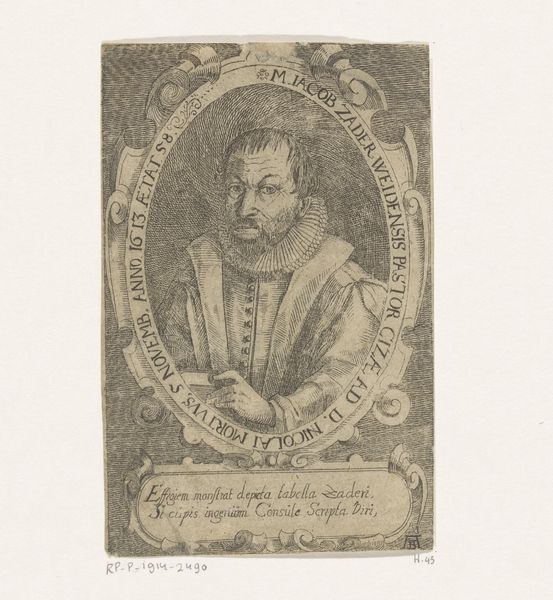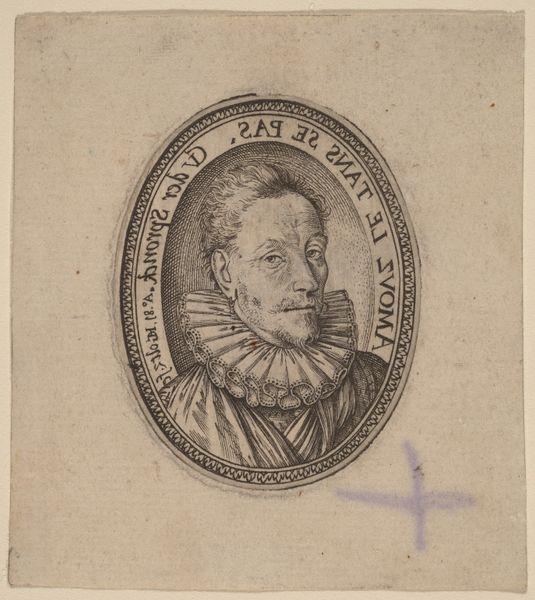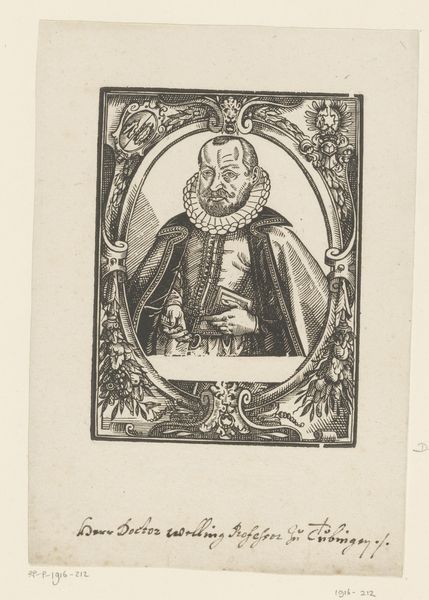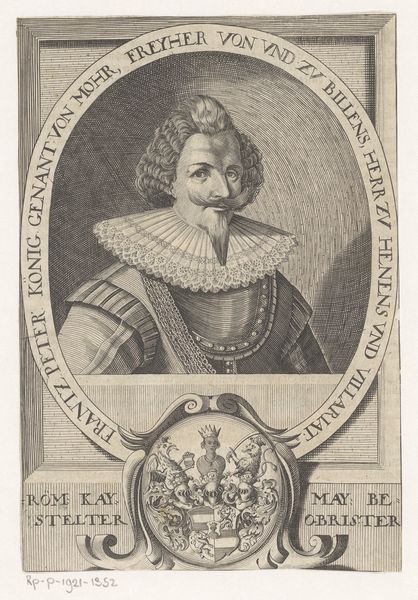
print, paper, engraving
#
portrait
# print
#
mannerism
#
paper
#
engraving
Dimensions: height 155 mm, width 105 mm
Copyright: Rijks Museum: Open Domain
Curator: This is a print of Henri de Bourbon, Duke of Montpensier. It’s an engraving on paper, made sometime between 1593 and 1614, attributed to Thomas de Leu. Editor: My first thought is: lavish! Just look at that ruff and embroidered attire. It practically screams status. I can imagine the labor it took to produce both the garment and the engraving that details its every stitch. Curator: Exactly! Prints like these played a crucial role in circulating images of power and nobility. They acted as early forms of propaganda, showcasing the Duke's image across geographical and social boundaries. The text below, proclaiming him immortal through his glorious deeds, underscores this function. Editor: Right, this isn’t just a picture; it’s a carefully crafted message. Considering it’s an engraving, the precision of line work, creating that level of detail is incredible. What sort of tools would de Leu use? You know, to get that fine line. Curator: Engravers at the time employed burins, small steel tools to carve lines directly into the metal plate. Then the ink settles into the grooves, and pressure from the press transfers that image onto paper. That technique allows for multiple, identical impressions which made imagery accessible. Editor: And cheap... Well cheaper, compared to paintings! That accessibility must have really impacted how people understood social status, didn't it? People could buy their own little slice of the aristocracy. Curator: Absolutely. The mass production of these images helped normalize certain aesthetics of power and wealth. Furthermore, it influenced the tastes and aspirations of a broader population. It served both as documentation and inspiration. Editor: It makes you think about the political implications embedded within material culture, and also that boundary between a high-end portrait and, let’s say, accessible images on paper, which perhaps became a commonplace medium. It sort of blurred things. Curator: It did indeed challenge those boundaries. This print showcases how art was intrinsically woven into the political and social fabric of its time, shaping perceptions and influencing culture. Editor: Understanding that helps me better appreciate how the value of even the Duke's portrait isn't only about aesthetics or a specific patron's taste. It is about something much broader... access and politics, and production as a powerful message in itself.
Comments
No comments
Be the first to comment and join the conversation on the ultimate creative platform.
